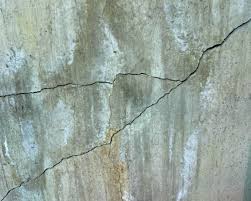Did you know 65% of homes in the U.S. face structural problems in their first 20 years? Most issues, like small shifts or tiny cracks, are easy to fix if caught early.
Soil movement, seasonal changes, and old materials often cause small problems in a home’s base. These aren’t just for show. If ignored, they can harm your home’s structural integrity, causing uneven floors or sticking doors. The bright side? There are modern fixes that won’t empty your wallet.
Today, experts use advanced techniques like epoxy injections or carbon fiber straps. They can fix most problems in 1-3 days. Whether it’s a basement wall issue or a slab problem, acting fast keeps your home value protection safe and prevents small issues from becoming big ones.
Fixing small problems early is like dental care for your house. It plumbing saves time, money, and stress. Costs range from $500 for simple fixes to $10,000+ for more complex ones. Let’s look at how to spot early signs and pick the best fix for your home.
Understanding Foundation Cracks in Residential Homes
Your home’s foundation is like its backbone. When it’s strong, everything stays in place. But even small cracks can cause big problems. Let’s look at how foundation health affects your wallet and what signs you should watch for.
Why Your Home’s Foundation Directly Affects Its Price Tag
Recent studies show that 63% of home sale delays are due to foundation issues. A solid foundation isn’t just about safety. It also protects your biggest investment. Homes with fixed foundation problems keep 92% of their market value, unlike those with ongoing issues.
Foundation quality affects your home’s value in three main ways:
- Mortgage lenders often need special inspections for homes with cracks
- Appraisers might lower the value by 10-15% for foundation problems
- Home insurance costs can go up by $300/year for properties with foundation claims
Sneaky Signs Your Foundation Needs Professional Eyes
Many homeowners focus on obvious cracks but miss these subtle signs:
The Cabinet Test: Doors that stick in their frames often mean your foundation is shifting. If your pantry door now needs a push, it’s time for a check-up.
Floor Detective Work: Place a marble on your floor. If it rolls towards one wall, your floor is uneven. This simple test could save you thousands.
Other signs you might overlook include:
- Gaps between walls and ceilings that change with the seasons
- Windows that rattle even when they’re closed tight
- High humidity in the basement without any plumbing leaks
Pro Tip: Take photos of any cracks every quarter with a coin for size. This helps you track changes and share with experts during your annual check-up.
For homeowners dealing with basement leaks or structural issues, professional foundation crack repair services in Edmonton can provide long-term peace of mind.
Top 5 Causes of Foundation Damage
Your home’s foundation faces many challenges from the environment and structure. Spotting these problems early can save you from expensive fixes later. Let’s look at the main reasons for foundation damage and how to lessen their effects.
Soil Movement and Settlement Issues
Expansive clay soils are a hidden threat to foundations. They swell in the rain and shrink in dry spells. This can cause your foundation to shift up or down unevenly.
In places with lots of clay, like Texas and Colorado, foundations often settle. To prevent this, keep the ground 6 inches lower than your home’s base. This helps keep the soil’s moisture stable.
Water Damage From Poor Drainage
Water near your foundation creates hydrostatic pressure. This pressure can crack walls and warp beams over time.
Bad gutters and flat yards can lead to water pooling. French drains or longer downspouts can help. Remember, water always flows downhill!
Temperature Changes and Freeze-Thaw Cycles
In cold areas, like Ottawa, frost heave can lift foundations. Freezing water expands, pushing up slabs. Thawing then creates gaps under the structure.
Insulating foundation footings helps fight this battle. Consider using special foundations in new buildings.
Tree Root Intrusion Near Structures
A tree 10 feet from your house might harm your foundation. Tree roots can spread wide and dry out the soil.
In one case, maple roots damaged a basement wall in 18 months. Keep trees 20 feet away from your home. Choose plants with shallow roots near foundations.
Construction Flaws and Aging Materials
Some foundation problems come from human mistakes. Poor concrete mixing or low-quality materials can cause issues years later.
Older homes face extra problems as materials wear out. Regular checks can catch these problems early.
| Cause | Impact | Prevention Tip |
| Expansive Clay Soils | Uneven settling | Install proper yard grading |
| Hydrostatic Pressure | Wall cracks | Use extended downspouts |
| Frost Heave | Foundation lifting | Insulate footings |
| Tree Roots | Soil dehydration | Maintain 20ft tree distance |
| Aging Materials | Structural weakness | Schedule biennial inspections |
These challenges might seem tough, but they’re manageable with the right steps. Simple care and regular checks can make your foundation last for decades. Stay on top of these issues, and your home will stay strong through all seasons.
Types of Foundation Cracks and Their Meanings
Understanding foundation cracks is like reading a map. Each pattern shows specific issues under your home. Some cracks are just for show, but others need quick help. Let’s explore what different cracks mean for your home’s health.
Vertical vs Horizontal Crack Patterns
Vertical cracks in new homes are common and usually harmless. They follow mortar joints and don’t usually mean structural stress. But, horizontal cracks are a different story:
- Common in basements with hydrostatic pressure
- Often accompany bowing walls
- Require immediate professional evaluation
A simple test: If a quarter slides easily into the crack, schedule an inspection. Narrower gaps might just need monitoring.
Diagonal Cracks and Structural Stress Indicators
Cracks between 30-75 degrees often show uneven settling. Look for these structural stress markers:
| Crack Location | Width Threshold | Recommended Action |
| Corner-to-window | 1/8″ | Monitor monthly |
| Doorframe angles | 3/16″ | Professional assessment |
| Basement corners | 1/4″ | Immediate repair needed |
Diagonal cracks wider than a dime often indicate foundation movement needing stabilization.
When Stair-Step Cracks Signal Major Problems
These zig-zag cracks following mortar joints often appear in brick or block foundations. While small stair-steps might result from normal aging, widespread patterns suggest:
- Foundation rotation
- Soil expansion issues
- Potential mortar joint failure
Key warning signs include cracks growing wider at the top or accompanied by sticking doors. If multiple stair-step cracks appear near corners, contact a structural engineer within 48 hours.
Professional Foundation Crack Repair Methods That Work
Foundation repair isn’t a one-size-fits-all solution. Experts use proven methods to fix specific cracks and underlying issues. Modern techniques use advanced materials and smart engineering. They offer fixes that last for decades, not just temporary patches.
Let’s look at five professional methods for tackling foundation problems. These methods handle everything from cosmetic issues to serious structural emergencies.
Epoxy Injections for Non-Structural Cracks
Epoxy is like superglue for your foundation. It’s a thick resin that fills cracks up to 1/4″ wide. It creates a waterproof seal stronger than concrete itself. Contractors often use it for:
- Basement wall hairline cracks
- Vertical shrinkage cracks
- Non-moving fissures in poured concrete
Source 1’s research shows epoxy is more flexible than hydraulic cement. It lasts 15+ years, compared to 5-8 years for hydraulic cement. Costs are $300-$800 per crack, making it great for early-stage issues.
Carbon Fiber Reinforcement Systems
When walls bow inward or horizontal cracks appear, carbon fiber straps are the answer. These ultra-strong ribbons get epoxy-bonded to foundation walls. They work like external tendons to:
- Stop existing cracks from widening
- Prevent new cracks from forming
- Distribute weight evenly across weak spots
Most systems come with transferable warranties—Source 2 notes 20-year coverage is now standard. Expect to spend $500-$1,200 per strap installed.
Helical Pier Installation for Severe Settling
Homes sinking due to unstable soil get support from steel piers. These piers are screwed deep into stable earth layers. This soil stabilization method:
- Lifts settled foundations up to 6″
- Transfers building weight to load-bearing strata
- Works where concrete piers would fail
Though expensive at $1,500-$3,000 per pier, helical systems prevent recurring issues better than temporary fixes. Most installations need 8-12 piers for full stabilization.
Hydraulic Cement Applications
The quick-setting cousin of traditional concrete shines in emergency leaks. Contractors pack this expanding material into active water seepage points for instant crack sealing. Key uses include:
- Plugging basement wall leaks during storms
- Sealing around pipe penetrations
- Temporary fixes until permanent repairs
At $10-$25 per 10lb bag, it’s affordable but temporary—Source 3 recommends combining it with drainage work for lasting results.
Drainage Correction as Permanent Prevention
40% of foundation issues recur without proper water management. Pros often install these systems alongside repairs:
- French drains ($1,000-$5,000)
- Gutter extensions ($8-$12 per linear foot)
- Swales reshaping ($500-$3,000)
Proper grading moves 95% of rainwater away from foundations—the ultimate soil stabilization strategy. Many companies offer 10-25% discounts when bundling drainage fixes with structural repairs.
Preventing Future Foundation Issues
Smart homeowners know it’s better to prevent foundation problems than fix them later. Simple habits and seasonal checks can keep your foundation strong. This avoids costly repairs. Here are three ways to protect your investment.
Keep Water Moving Away From Your Home
Gutters and ground slopes help keep water away from your home. Follow the 10-foot rule: Make sure downspouts extend at least 10 feet from your foundation. Here’s how to do it:
- Clean gutters twice yearly – after fall leaves and spring blossoms
- Use splash blocks or buried drain pipes to redirect runoff
- Check soil slope monthly – aim for 6 inches of drop over 10 feet
Balance Your Soil’s Moisture Levels
Keeping soil moisture consistent prevents it from expanding or shrinking too much. Source 3’s landscaping research shows these methods work best:
| Season | Action | Benefit |
| Spring | Install soaker hoses 18″ from walls | Prevents drought-related settling |
| Summer | Add 3″ mulch around perimeter | Reduces evaporation |
| Fall | Trim tree roots beyond 5-foot radius | Stops moisture theft |
Smart Inspection Schedules Save Money
Mark these dates on your calendar for preventive care:
- Annual full inspection: Early spring (after thaw)
- Quick checks: After heavy rains or droughts
- Professional review: Every 3-5 years for homes over 20 years old
Most issues are cheaper to fix if caught early. Look for new cracks, sticking doors, or uneven floors between inspections.
Protecting Your Home Starts From the Ground Up
Keeping your foundation healthy is key to your home’s value and avoiding expensive repairs. Fixing cracks early can save you a lot of money, studies show. Using methods like carbon fiber straps or helical piers can protect your home for a long time.
Homeowners can get warranties that last for decades from certified contractors. Regular checks by structural engineers can catch small problems before they get big. Simple tasks like cleaning gutters and adjusting soil can also help keep your foundation safe.
Don’t wait to get your foundation checked by experts. Many companies offer free checks to find out if your home is at risk. Taking care of your foundation now keeps your family safe and protects your biggest investment.








